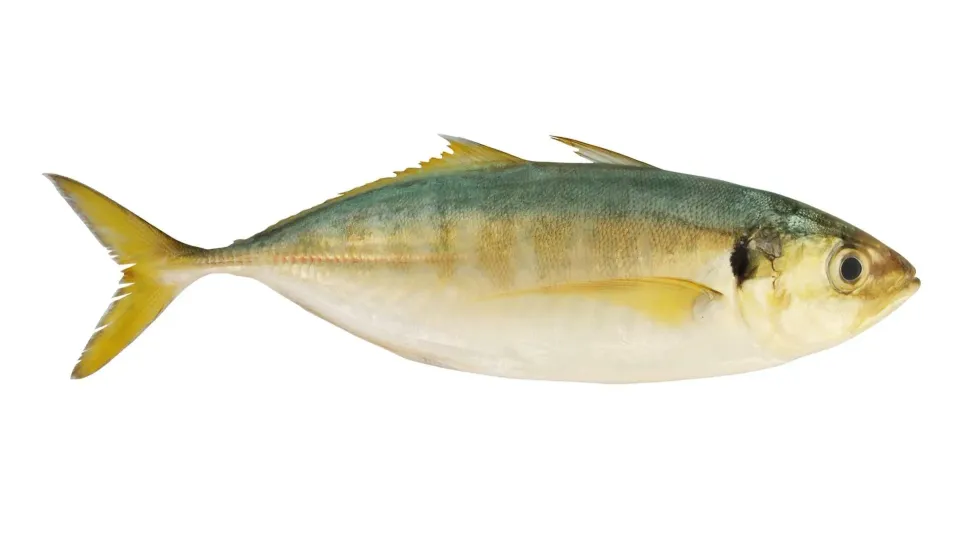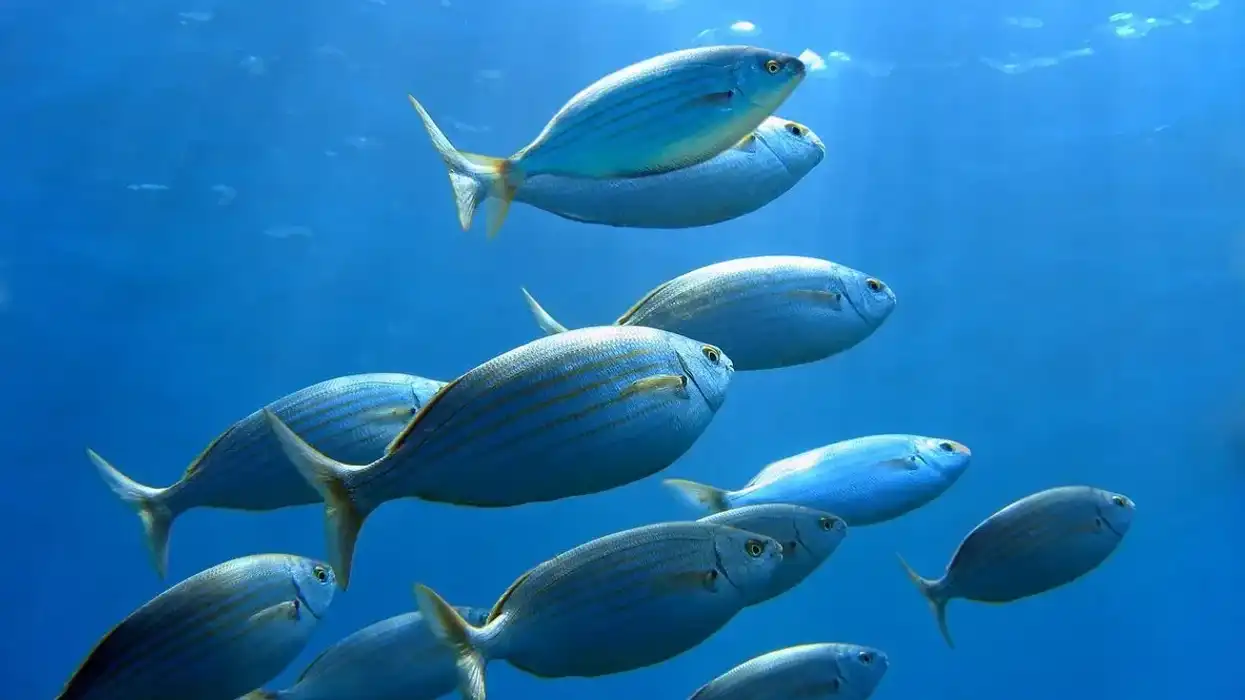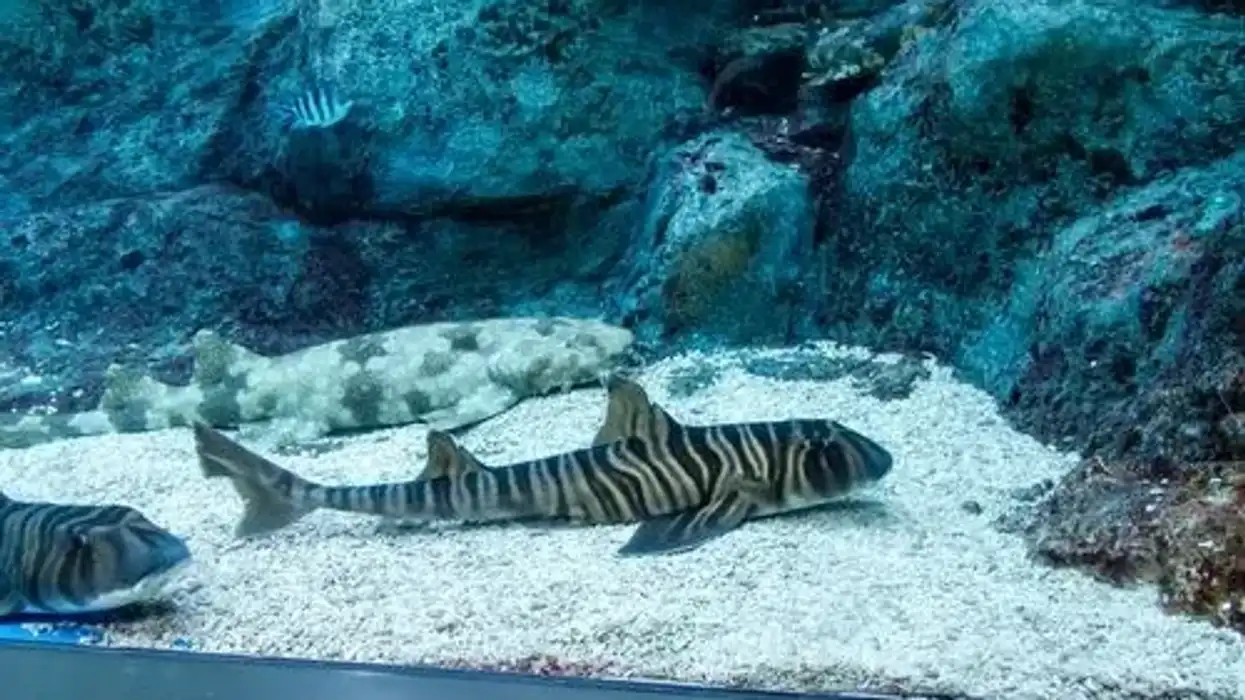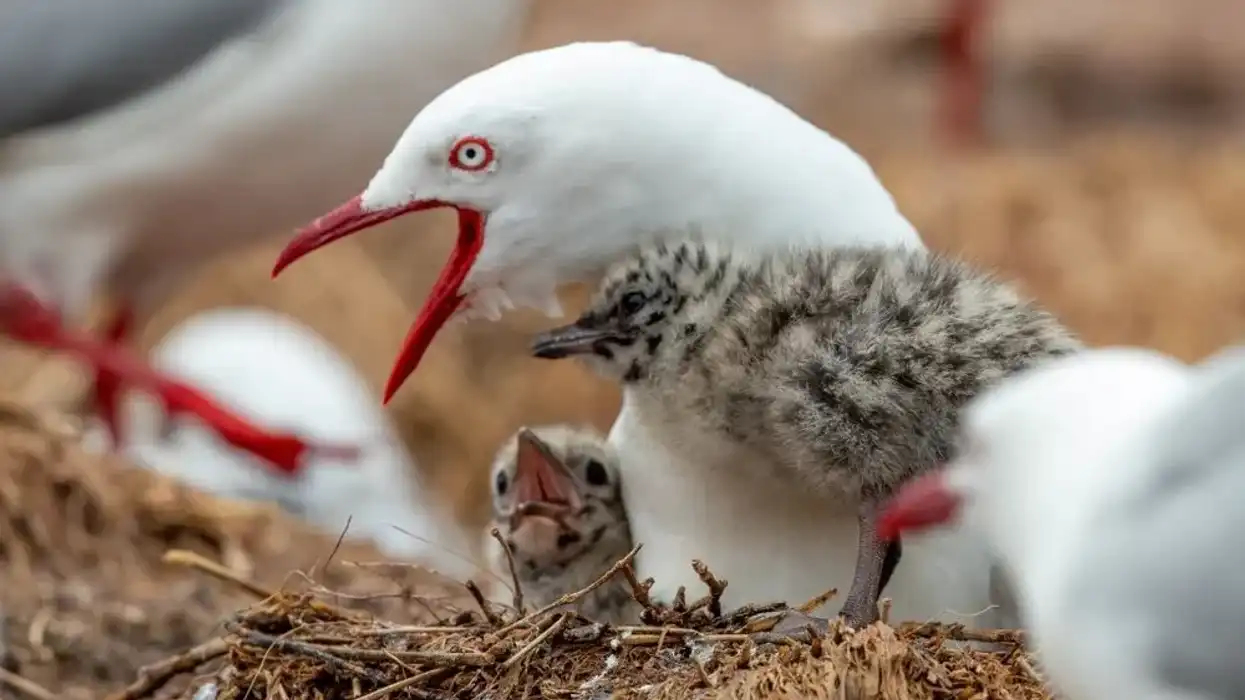The yellowtail scad, scientific name Atule mate, is a beautiful oval-shaped marine fish that is mostly found all over the world. They can be seen in the Indo-Pacific region, Australia, the Persian Gulf, and the Red Sea.
They have a beautiful yellow tail from which comes their name. These species are often confused with the yellowtail horse mackerel, Trachurus novaezelandiae, found mostly on the south coastal line of Australia. These two species are a bit similar in their appearance but differ in major aspects.
These species are found on coral reefs, large bays with mangroves, and coastal areas. They are seen in groups swimming or schooling together near reefs. The types of food they search for are shrimps, crabs, and small fish. They have two dorsal and anal fins.
The last soft rays of both dorsal and anal fins have a finlet-like structure. The lateral line is normal to be evident on their body. Mostly, they are seen in tropical and subtropical waters.
They are found all over the world and are on the list of Least Concern by the IUCN. They are well known in the fishing market and are a major target for commercial fishermen. The yellowtail scad fishing season differs in different regions. The yellowtail scad eating recipe differs, such as boiling, frying, and steaming.
If you enjoy reading about this marine species, then do read about bigeye tuna and clownfish.
Yellowtail Scad Interesting Facts
What type of animal is yellowtail scad?
The yellowtail scad, Atule mate, is a beautiful oval-shaped fish similar to the yellowtail horse mackerel, Trachurus novaezelandiae. These similar species have the same name but differ in one or another way.
What class of animal does yellowtail scad belong to?
The yellowtail scad belongs to the class of Actinopterygii similar to the paddlefish and the family Carangidae. They are from the genus Atule.
How many yellowtail scads are there in the world?
The exact number of these marine fish is not estimated and is unknown to the world. Through their wide distribution and range map, you will get the idea that they are not rare and are found all over the world.
Where does yellowtail scad live?
The distribution of yellowtail scads is such that they are found in the Indo-Pacific region. They have a wide range on the map.
They can be spotted in the southernmost parts, such as the Indian Ocean, South Africa, Madagascar, the Persian Gulf, the Red Sea, Sri Lanka, and India. In the Pacific region, these marine species can be found from southern East Asia, such as Indonesia and the Philippines, to southward in northern and southern Australia, Japan, and East Hawaii.
What is yellowtail scad's habitat?
These species are well developed in tropical and subtropical regions. They are found near large bays, coastal areas, mangroves, and coral reefs. The young juveniles are mostly seen in groups with floating things or objects on the surface of the water.
Who do yellowtail scads live with?
They are often found swimming in groups or schools of fish at a depth of 263 ft (80 m).
How long does yellowtail scad live?
The yellowtail scad can live up to 15 years of life. In a few cases, it can vary from 12-20 years.
How do they reproduce?
These pelagic predators are often seen spawning in open areas of large embayments near mangroves. They mostly breed during the months of March and October and their length varies annually.
There is no significant data available at which size they become mature sexually. Through some estimations, the size which has been given is 6-6.3 in (15-16 cm). The spawning group of all the males and females in the bay are active in spawning in the morning.
The female releases around 1,61,000 million eggs onto the open surface and their spawning is seen up to a depth of 33 ft (10 m). The eggs are often seen floating on the surface and join the group as juveniles.
What is their conservation status?
These marine fish are found all over the southern part of the world and are not rare. They are on the list of Least Concern by the IUCN.
Yellowtail Scad Fun Facts
What do yellowtail scads look like?
The yellowtail scads are beautiful, small, oval-shaped fish that are often confused with other scad fish such as Trachurus. The dorsal and anal fins are rounded and bulging.
They have two dorsal fins. The first one has eight high spines and 22-25 soft rays in the second fin. The anal fin has 18-21 soft rays.
The last soft rays of both fins have a finlet-like structure. They have eight to nine curved yellow golden lateral lines running from upward to downward.
Their pectoral fins are small, pointed, and transparent yellow. They have a yellow fork-like tail and a caudal fin, which also gives them their name. These species also have adipose eyelids, which are more evident in adult fish.
From the underside, they are silver to white in color with gray lateral lines on them. They have big black eyes and a light white lateral line up to the caudal fin.

*We've been unable to source an image of a Yellowtail Scad and have used an image of its habitat. If you are able to provide us with a royalty-free image of a Yellowtail Scad, we would be happy to credit you. Please contact us at hello@kidadl.com.
How cute are they?
These species look cute and attract viewers. The color combination and schooling in inshore water at bays make them even cuter, but as these fish are carnivores, they might attack the smaller species.
How do they communicate?
The yellowtail scads' communication is not evident, but at the time of danger, they are often seen schooling underwater. So, they might communicate using physical gestures. Even at the time of spawning, they make quick movements around the female in order to lure her.
How big is yellowtail scad?
These Atule mate species are 11.8-19.7 in (30-50 cm) long in their length. The torpedo scad is among the larger marine fish.
How fast can yellowtail scad swim?
There has not been much reported in the context of their speed, but these fish swim irregularly in dark places, while in the light they swim with their normal consistency in water.
How much does yellowtail scad weigh?
The weight of this marine fish is 11-35 oz (0.3-1 kg).
What are the male and female names of the species?
There is no such specific name for the male and female species.
What would you call a baby yellowtail scad?
The babies of these marine fish are called larvae.
What do they eat?
They are carnivores and mostly search for small fishes, crabs, lobsters, and shrimp.
Are they dangerous?
No, they are not dangerous and are commonly used by commercial fishermen for fishing. They can be dangerous to small species smaller than their own size.
Would they make a good pet?
Yes, they will make good pets if kept with all precautions. There is no harm known from them.
Did you know...
Georges Cuvier, a French zoologist, described this marine fish in 1833.
The yellowtail scad legal size and length is not given by New South Wales in Australia. The number is limited to 40 in a bag.
The Carangidae is one of the largest marine fish in the order of Carangiformes.
These fish are also known as northern yellowtail scad and one finlet scad. The yellowtail scad in Chinese is known as omaka.
Can you eat yellowtail scad?
Yes, they can be eaten and are not venomous. The yellowtail scad recipe can be searched on Google and you will end up with many. The best way to eat these marine fish is raw.
How do you clean yellowtail scad?
First, the backbone is cut through by pulling off the head. Then cut their underside belly till their chin to remove the cavities. Finally, cut off their pelvic fins.
Here at Kidadl, we have carefully created lots of interesting family-friendly animal facts for everyone to discover! For more relatable content, check out these piranha fish fun facts and sawfish interesting facts for kids.
You can even occupy yourself at home by coloring in one of our free printable yellowtail scad coloring pages.










